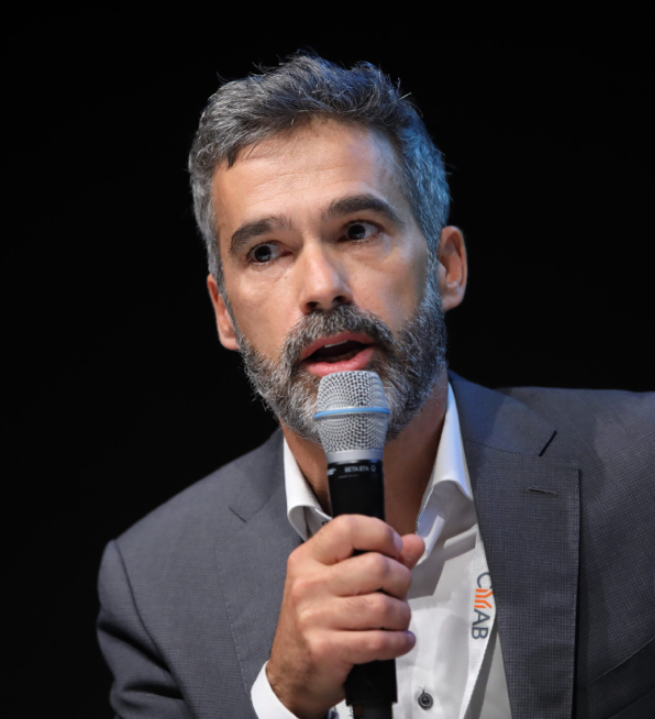1 October 2020
PLEASE NOTE: The Viewpoints on our website are to be read and freely shared by all. If they are republished, the following text should be used: “This Viewpoint was originally published on the REVIVE website revive.gardp.org, an activity of the Global Antibiotic Research & Development Partnership (GARDP).”
The challenge of access to antibiotics
Whether it concerns an old or new antibiotic, access to these drugs represents a major challenge globally and this is not a recent problem. The COVID-19 pandemic has exacerbated the shortages of existing antibiotics and the lack of new and innovative treatments. It has led to the recognition that we not only need efficient treatments to be available for patients when and where needed but also that we need to have innovative treatments ready prior to reaching an emergency situation.
Currently, the lack of access to antibiotics causes eight times more deaths every year than antibiotic resistance (5.7 million deaths versus 700,000)1.
Accessing new antibiotics
Most new antibiotics are not available in all parts of the world. Of the 25 new chemical entities (NCEs) developed between 1999 and 2014, only twelve had registered sales in more than ten countries 2. Low- and middle-income countries (LMICs) do not benefit from novel antibiotics, because country-by-country registration is too costly. On the other hand, new antibiotics are often not registered and available in all high-income countries (HICs) due to the lower burden of drug-resistant infections. Some new antibiotics are not even registered or sold in Europe (e.g. Plazomicin, Omadacycline) 3.
We all know that particularly for antibiotics we need to move away from the current traditional business model and develop a new paradigm to secure the production and availability of antibiotics for all who need them.
Compared to other drugs, the development of new antibiotics faces several challenges which makes them less appealing to investors, including venture capitalists and pharmaceutical companies: difficult to develop, complex clinical trials design, generally prescribed for only short periods of time, and their use by physicians must be restricted to drug-resistant infections to avoid the emergence of drug resistance. As a result, new antibiotics have low sales and minimal profits, at least during the first years of commercialization.
Small and medium-sized enterprises (SMEs), which are currently the main drivers of innovation and in charge of feeding the antibiotics pipeline, do not have the financial capacity to ensure a global distribution of any new antibiotic, nor financial sustainability to invest in their development. Establishing a supply chain, maintaining a market presence, and dealing with post-registration requirements demands considerable resources, which makes it difficult for SMEs to envision commercialization outside the US and Europe. And LMICs are unfortunately being side-lined from their commercial priorities.
Accessing old antibiotics
Access is also a concern for antibiotics developed in the 20th century that remain important treatments today. Many of these are still used as first-line antibiotics for common infections. They are affordable low-price products and are the main recommended treatments in the local guidelines. When essential generic antibiotics are registered in countries, supply issues, like shortages, often limit their access. The causes are varied with very different reasons in Europe vs Africa: manufacturing challenges (many antibiotics are dependent on only few active pharmaceutical ingredient (API) manufacturers), regulatory challenges (with the increase in regulatory compliance costs leading to a significant cost impact for old antibiotics with low profit margins), commercial decisions (old antibiotics are often subject to tenders with selection based purely on price criteria thus reducing the profitability of the market, which negatively impact quality and availability of APIs).
The supply chain of old antibiotics is becoming more and more fragmented and at risk. Shortages of old essential antibiotics are likely to become increasingly common.
New solutions and mechanisms are needed
To respond to this global health threat, new access concepts and mechanisms are urgently needed to accelerate the availability of adequate treatments to the patients who need them and secure affordability of essential antibiotic treatments to treat drug-resistant infections globally.
To respond to this global health threat, new access concepts and mechanisms are urgently needed to accelerate the availability of adequate treatments to the patients who need them and secure affordability of essential antibiotic treatments to treat drug-resistant infections globally.
In addition to several push funding tools to support R&D on antibiotics, many mechanisms to stimulate the market of antibiotics have been proposed and developed during the past five years. However, the next big challenge is access. How can we ensure that important antibiotic treatments will be made and remain available to all patients in need, with a focus on LMICs, where infectious disease burden is higher? How can we guarantee that these life-saving products will find a place in their market and will not be lost even if they do not match the economic criteria of the pharmaceutical company’s business model?
Investments in pandemic preparedness and antibiotic access are needed now more than ever to prevent future outbreaks of infectious diseases. In our role at GARDP, a not-for-profit organization that develops new treatments for drug-resistant infections, we are working on an initiative, with partners, to consider new access models for essential antibiotics, particularly for countries with a high burden of drug-resistant bacterial infections.
This new initiative aims to:
- Create a dynamic portfolio of affordable essential antibiotic treatments to fight drug-resistant infections;
- Provide countries with rapid access to this portfolio potentially through a subscription model;
- Ensure that countries which opt in to the concept will have access to a regular supply of quality antibiotics;
- Foster appropriate use of these antibiotics by generating real-word data to support country adoption.
We recognize that creating a dynamic portfolio of essential antibiotics, potentially supported by a subscription model, for all countries with a high infectious load is ambitious. But it builds on the discussions initiated in 2019 during the access workshop we organised in Geneva: “Delivering on the sustainable access of antibiotics: moving from principles to practice” 4.
Ultimately, this endeavour will benefit both the global public health community by ensuring antibiotic security (which is a key component of pandemic preparedness to prevent future health outbreaks), and countries by accelerating and securing access to a portfolio of affordable new antibiotic treatments against priority infections.
We are very motivated to work with partners to further develop this concept for a new antibiotic access mechanism. We all know that particularly for antibiotics we need to move away from the current traditional business model and develop a new paradigm to secure the production and availability of antibiotics for all who need them. Much remains to be done, but the global health threat of drug-resistant infections means we must act now.
References
- Center For Disease Dynamics, Economics & Policy (CDDEP). Access Barriers to Antibiotics. 2019.
- Kållberg C, Årdal C, Salvesen Blix H, Klein E, M Martinez E, Lindbæk M, Outterson K, Røttingen JA, Laxminarayan R. Introduction and geographic availability of new antibiotics approved between 1999 and 2014. 2018
- Rex JH, Outterson K. New antibiotics are not being registered or sold in Europe in a timely manner. 2020
- GARDP, Medicines Patent Pool (MPP) and World Health Organization (WHO). Delivering on the sustainable access of antibiotics: moving from principles to practice workshop report. 2019

Yann Ferrisse joined GARDP in 2018 and is leading the Business Development activities of GARDP. Since mid-2020, Yann is working on all GARDP commercial market access strategies related to GARDP’s products.
Previously, he has worked for 20 years in the field of strategic consulting. Prior to joining GARDP, he was Partner and Managing Director at Alcimed`s regional office in Singapore – an innovation and new business consulting company specializing in life sciences and other areas. While at Alcimed, Yann was instrumental in setting up country offices throughout Europe (France and Switzerland) as well as in Singapore – the company’s first office in Asia and the hub of their APAC activities. There, he was heading the business development team, contributing to establish long term partnerships with several global pharmaceutical companies as well as biotechs and food companies. Between 2010 and 2015, Yann was also invited to join the CCEF (Conseillers du Commerce Extérieur de la France) where he acted as French Foreign Trade Adviser.

Fernando Pascual Martinez joined GARDP as Senior Access Manager in July 2020. Fernando is a pharmacist specialized in access to medicines and quality assurance of pharmaceuticals in developing countries. After working with Médecins Sans Frontières (MSF) from 2001 to 2012 in the field and in the Access Campaign, Fernando became an independent public health consultant to several organizations like the Medicines Patent Pool, UNICEF, WHO and the Global Fund among others. In MSF and as consultant, Fernando strived to increase access to medicines in the field of HIV and HCV mainly, by for instance analyzing intellectual property and price barriers and addressing patent pooling, participating and helping to establish the Global Accelerator for Paediatric Formulations (GAP-f), assessing regulatory pathways and regulatory issues for new products, and contributing to WHO reports on access to HCV drugs.